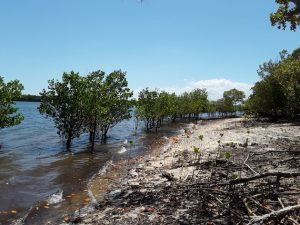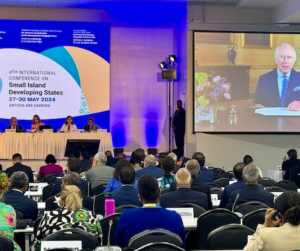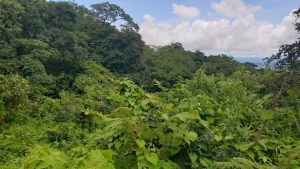- ONE IN EIGHT CHILDREN FACE HARM, WORLD’S FIRST GLOBAL ESTIMATE FINDS
- MIDDLE EAST AND NORTH AFRICA HAVE MOST ALERTS FOR ABUSE MATERIAL
- CONCERNS IN EAST & SOUTHERN AFRICA AND WEST & CENTRAL AFRICA
- ONE CASE AROUND THE WORLD REPORTED EVERY SECOND
- INTERPOL WARNS OF “CLEAR AND PRESENT DANGER TO WORLD’S CHILDREN”
- AFRICAN SURVIVORS DEMAND ACTION ON “GLOBAL HEALTH EMERGENCY”
LONDON, May 27, 2024 (GLOBE NEWSWIRE) — Over 300 million children are subjected to online sexual exploitation and abuse globally, with several parts of Africa identified as areas of concern. These are among the conclusions by university researchers behind the first global estimate of the scale of the crisis.
With files containing sexual images of children are reported worldwide once every second, the authors stated that pupils “in every classroom, in every school, in every country” are victims of this “hidden pandemic”.
The statistics appear in a ground breaking report the Childlight Global Child Safety Institute at the University of Edinburgh, Scotland. It indicates that one in eight, or 12.6%, of the world’s children have endured past year experience of non–consensual taking, sharing, and exposure to sexual images and video, amounting to about 302 million young people.
Additionally, 12.5% of children globally (300 million) were subject in the past year to online solicitation, including unwanted sexual talk, non–consensual sexting, and unwanted sexual questions or act requests by adults or other youths. Offences can also include “sextortion” and abuse of AI deepfake technology.
One child grooming survivor campaigning for change emphasised the need for stronger regulation to hold tech platforms accountable, especially with the increasing difficulty of detecting offenders due to the roll–out of end–to–end encryption on popular social media apps.
Childlight’s new global index, Into the Light, found the Middle East and North Africa receive the highest Child Sexual Abuse Material (CSAM) hosting alerts per population size – nine per 1,000 people, more than any other region. The prevalence of online solicitation is highly reported by children in East and Southern Africa and West and Central Africa, at 20.4% and 18% respectively, compared to the 12.5% global average.
While these African regions receive fewer CSAM hosting reports, their lower internet availability suggests they may become future hotspots as more countries come online.
Childlight CEO Paul Stanfield, a former Interpol Director, stressed the urgency of treating the issue as a global health emergency. “Child abuse material is so prevalent that files are on average reported to watchdog and policing organisations once every second. This is a global health pandemic that has remained hidden for far too long. It occurs in every country, is growing exponentially and requires an urgent global response. Children can’t wait.”
Debi Fry, professor of international child protection research at the University of Edinburgh, who led the Childlight project, stated: “The world needs to know these atrocities are affecting children in every classroom, in every school, in every country. These aren’t harmless images: they are deeply damaging.”
Interpol’s executive director, Stephen Kavanagh, said: “Online exploitation and abuse is a clear and present danger to the world’s children, and traditional law enforcement approaches are struggling to keep up. We must do much more together at a global level.”
Newton Kariuki*, a 22–year–old Kenyan man who was sexually abused as a child, adds: “It pains me so much that children still face abuse. For me it affected me so much. Sharing with anyone, even with my parents at first was hard, but I had to get justice. Guidance and counselling are important. It is what has helped me to overcome the stigma and negative feelings I had in me.”
Timothy Opobo, Executive Director of The AfriChild Centre in Uganda, emphasised the need for more data and investment in research to prevent child sexual abuse and exploitation effectively. “Building the evidence base through rigorous research is crucial to ending harmful social norms and beliefs that don't work in the best interests of the African child,” he said.
Among the key findings based on original research and analysis of 125 studies and over 36 million reports are:
- The Middle East and North Africa receive the most alerts about CSAM per head of population.
- Eastern and Southern Africa report the highest prevalence of online sexual extortion.
If you or someone you know needs support for child sexual exploitation and abuse, or if you are concerned that you might hurt a child, please visit Child Helpline International or brave movement or Stop it now
Notes to editors
A copy of the full report, video clips, photos and an infographic (all free to use) are available at this Dropbox link https://www.dropbox.com/scl/fo/0pty9kmxhe1w59d40kfvr/ANTWduJsRUje1lHKKu39_2c?rlkey=yo453zr3klnrangcspf6jc7ye&st=7tguck3i&dl=0
*Survivor name changed to protect identity
Childlight is funded by the Human Dignity Foundation

GLOBENEWSWIRE (Distribution ID 1000952789)




